The content of the article
Nutritionists recommend that absolutely all cereals be included in the daily diet, provided that the infant does not suffer an allergic reaction to a particular type of cereal.
Which cereals should be treated with caution during the period of breastfeeding the baby? Firstly, it is rice porridge, which has the properties of fastening, as a result of which the baby will have problems with stools, especially since infants are prone to frequent constipation. Secondly, it is worth paying attention to pearl barley, which can provoke a child's gas and bloating. And if the baby suffers from food allergies caused by protein intolerance, then mother should not eat wheat, semolina, oat, barley, barley and rye porridge, as they belong to the group of gluten containing cereals.
The benefits of millet porridge and its composition
Doctors in the field of nutritionists and allergists recommend eating millet groats during lactation. It contains many important vitamins and minerals that are necessary for mother and baby for this period.
What is the use of millet porridge? It is worth noting that this type of cereal will absolutely not do any harm to mom during lactation. This cereal is a source of valuable amino acids, fats and unique vitamins. And for people who have problems with the gastrointestinal tract, atherosclerosis and diabetes - it is recommended by experts. This porridge is absolutely hypoallergenic for both kids and adults.
Millet porridge is easily absorbed by the body, also, due to the rich content of a complex of vitamins and minerals, it has a general strengthening property and removes toxins from the body well. It contains vitamins:
- Groups B and PP are essential vitamins for the normal growth and development of the baby, especially in the first year of his life.
- Fluorine - helps the process of bone formation, which is an important factor in the normal growth of the child.
- Silicon is important for increasing the elasticity of tendons, ectodermal, muscle and skin tissues, which is also useful for a child in the first year of his life.
- Manganese - plays an important role in the metabolic process, the stable activity of the central nervous system, helps to improve reflex function, improves memory.
- Iron is an important chemical element for the blood-forming and immune systems of the body. Lack of it leads to anemia and immunodeficiency.
- Copper - plays an important role in the formation of red blood cells and contributes to the absorption of iron.
- Collagen - is responsible for the synthesis of melanin and skin elasticity, the formation of ectodermal tissues and blood vessels.
- Potassium is an important trace element for combating allergens, with its help cells get the electrolytes needed for the body.
- Calcium is necessary for the full coagulation of blood, the function of neuromuscular excitability, and for other important processes. It plays a huge role in the formation of nails, teeth, hair, epidermis and eye lenses.
- Folic acid is an essential trace element for baby tissue growth.
What is the benefit of millet groats for a woman in the postpartum period?
- Millet gives strength and energy, helps to cope with stress and depression, contributes to normal blood pressure, which is necessary for every woman after childbirth. The use of millet prevents the aging process, because, in addition to the body receiving a portion of vitamins, toxins that contribute to aging are eliminated from the body.
- In addition to preserving youth, millet porridge helps to cope with excess weight, because many mothers after birth are concerned about the process of losing weight. During lactation, diets for weight loss are prohibited, but millet porridge, in addition to its benefits for the baby and mother, is also beneficial for the mother's figure. Wheat groats due to the high content of manganese do not make it possible to retain and accumulate excess fat in the body.
- If a nursing mother is tormented by constipation, which cannot be avoided in every way, then by eating millet porridge in the daily diet, this problem will be eliminated.
How to cook millet for a nursing mother?
Firstly, when choosing cereals, you need to pay attention to the packing date and storage periods, because expired millet contains the minimum amount of vitamins laid on it, and its taste is not the best.
When choosing a cereal, you should pay attention to its color, as it talks about its qualities:
- Bright yellow cereal has the most intense taste and is the most delicious.
- Dark shades of yellow should be chosen for the preparation of crumbly porridge.
- Lighter yellow tones of porridge indicate that the porridge will not be crumbly, it will break apart very much and will look like mashed potatoes.
Before cooking, be sure to clean the cereal. Next, you need to pour the grains with water and bring to a boil, after which the water should be drained and washed under running water.
After cooking, such porridge can be eaten as an independent dish, or as a side dish. For lovers of sweet dishes, you can add pumpkin and apples. Raisins, dried apricots and prunes should not be added, because this can cause problems with the stool in the baby. Remember that raisins and dried apricots weaken.
Experienced chefs advise
To prepare porridge with pumpkin, you need to cook the pumpkin separately. To do this, boil the pumpkin, then beat it with a blender and add to the already prepared milk porridge. Next, you need to mix very well and put on low heat for about five minutes. Apples should be added to porridge at the very beginning of the cooking process, this will give an exquisite taste and aroma to the dish.
How to eat millet groats during lactation?
Millet groats in the diet of a nursing mother should be introduced gradually, and it is necessary to carefully monitor the condition of the child and mother. The main thing is not to miss the worrisome signs of an allergic reaction in the baby, because food allergies in infants can be caused by a rash and redness on the cheeks. And also pay attention to the child’s chair. If you still think that millet porridge provokes an allergic reaction in a child, then it should be excluded from the diet. At the slightest suspicion of an allergy, you need to consult a pediatric doctor and a nutritionist.
So is it possible to eat millet porridge for a nursing mother? Of course, you can, because this is a storehouse of vitamins that allow mom to remain young, slim and full of strength, because a healthy mother is the key to a healthy baby.
Nursing mom's diet video


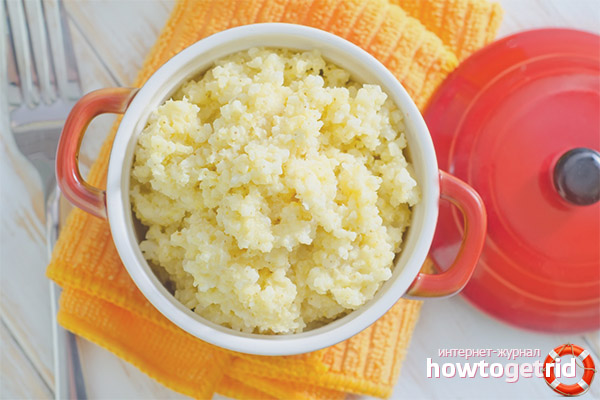
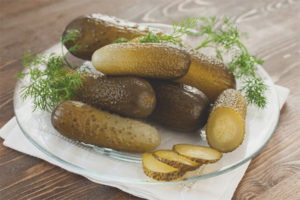
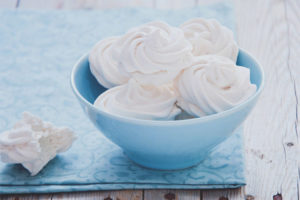
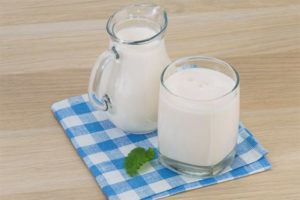
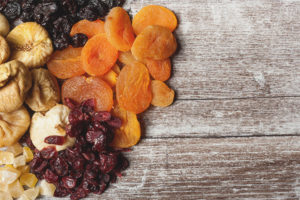
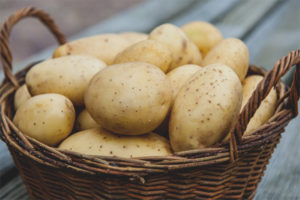

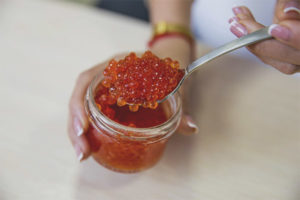
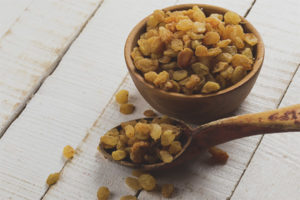
Submit